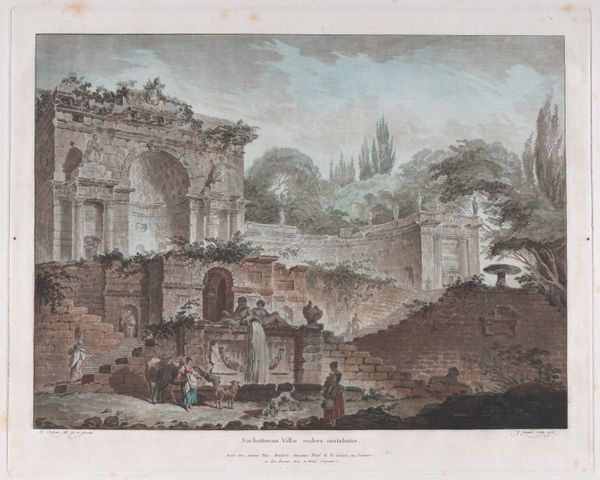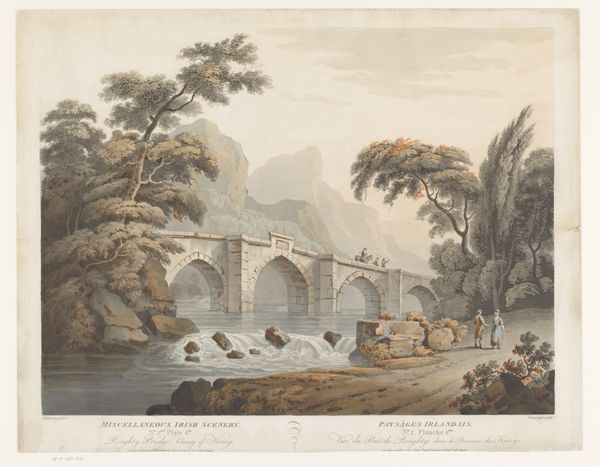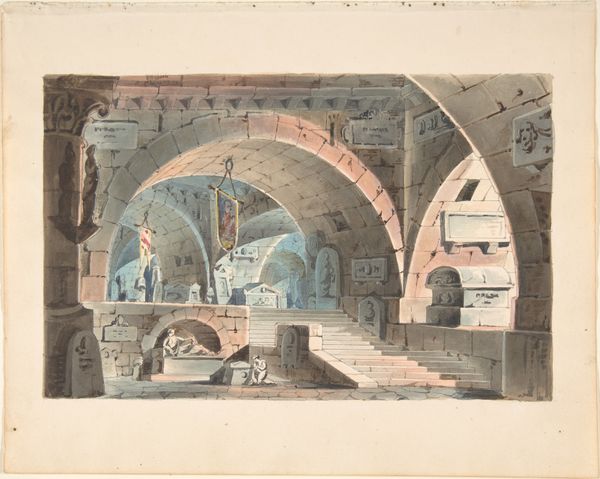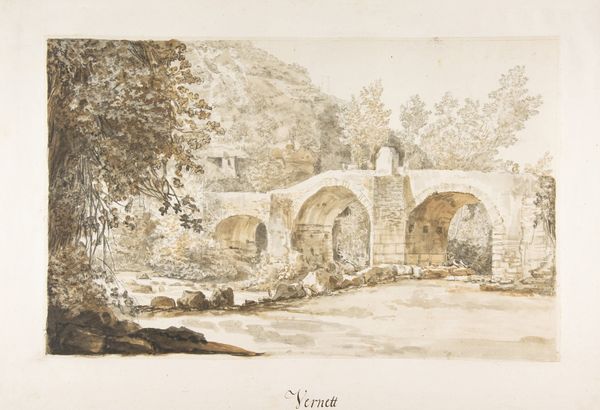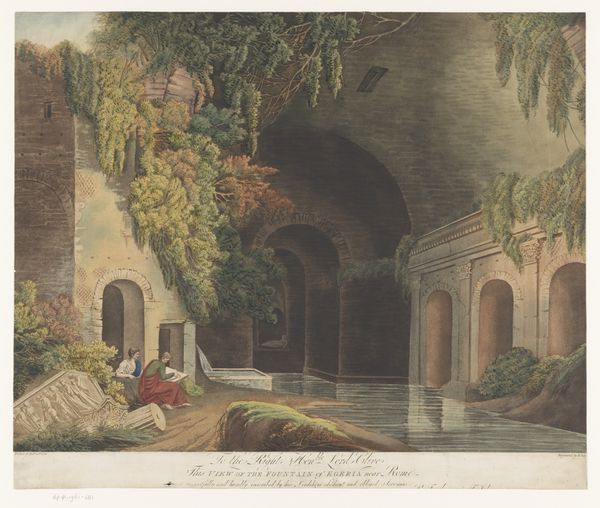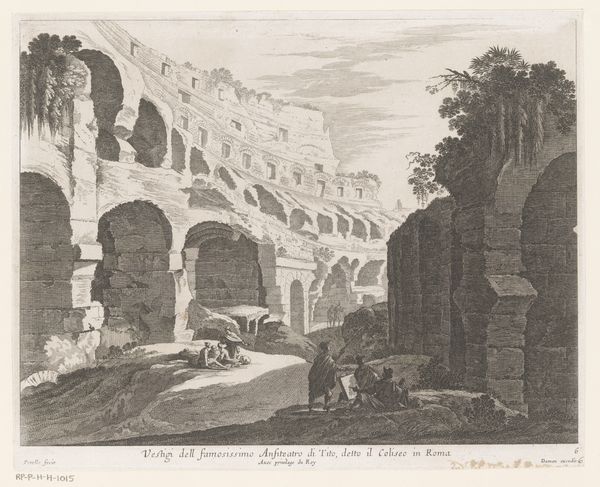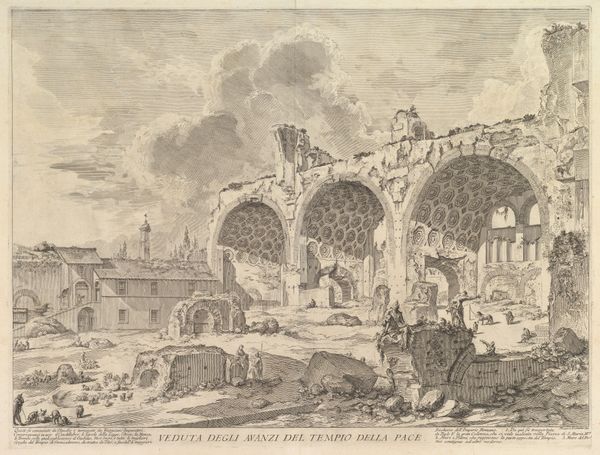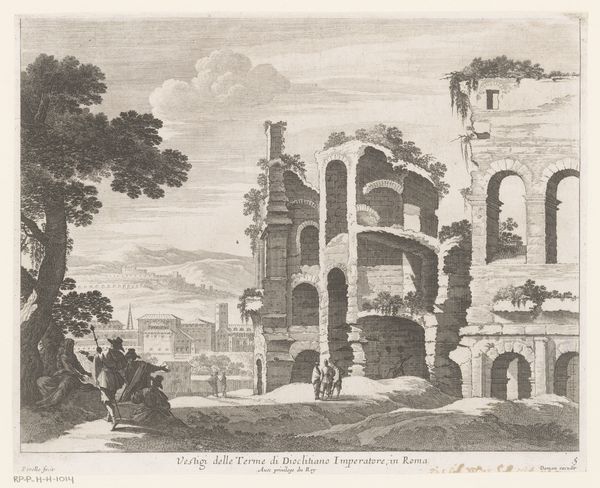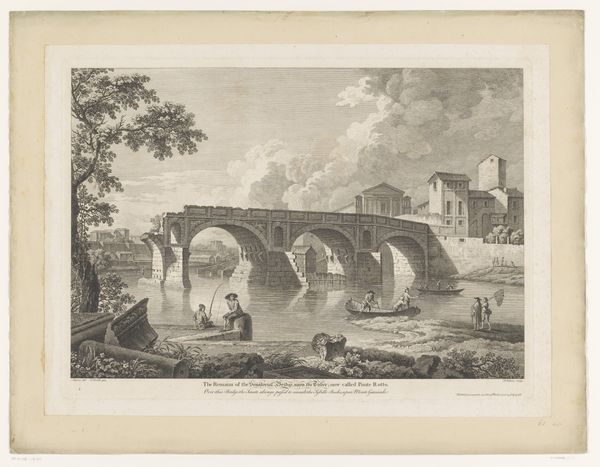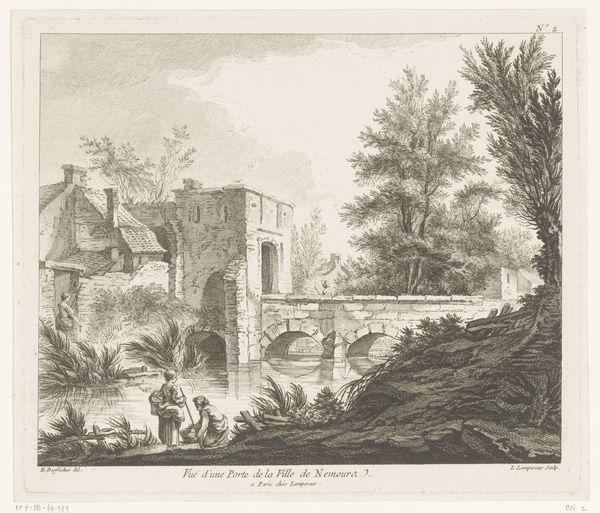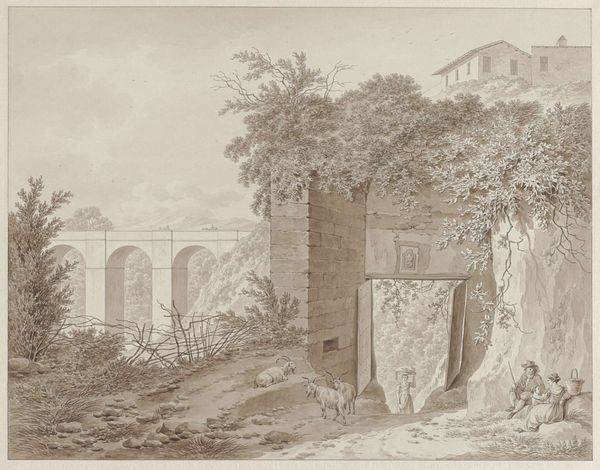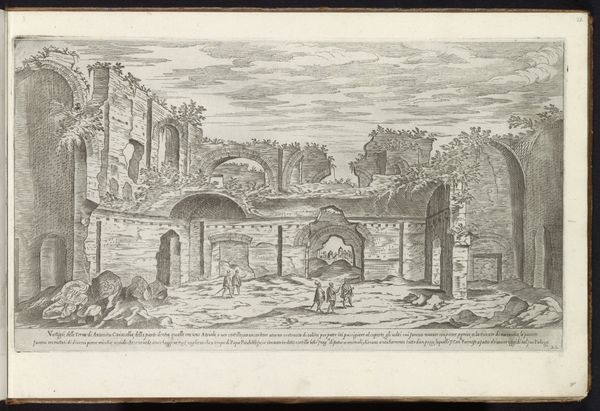
drawing, print, etching, watercolor, architecture
#
drawing
#
neoclacissism
# print
#
etching
#
landscape
#
watercolor
#
history-painting
#
watercolor
#
architecture
Dimensions: Sheet: 19 11/16 × 25 3/16 in. (50 × 64 cm) Plate: 16 1/8 × 20 1/16 in. (41 × 51 cm)
Copyright: Public Domain
Editor: Here we have "Villa Madama, after H. Robert" created around 1778, a print utilizing etching and watercolor by Jean-François Janinet. It’s striking how the grandeur of the architecture is juxtaposed with such quotidian details like laundry hanging out to dry. What can you tell me about it? Curator: What interests me is less the romantic depiction, but how this print reveals a particular relationship to material reality. The crumbling Villa Madama, depicted via etching and watercolor—a relatively accessible means of reproduction—brings high architecture into the homes of a burgeoning middle class. Consider the labor involved. The artist, Janinet, translating Robert's vision through reproducible means. What does that say about art production during this period? Editor: It's almost like he's democratizing access to this vision of grandeur. But what about the ruin itself? Curator: Exactly! The ruin points to histories of use, alteration, and social activity effacing established hierarchies, as evidenced by, like you said, the hanging laundry or the tents. Instead of presenting idealized perfection, the image shows how classical forms are adapted, inhabited, and even overtaken by daily life and labor. Is it celebrating the classical past or documenting its transformation through everyday use and the means of its artistic representation? Editor: So, you are more interested in the ‘how’ of this Neoclassical depiction rather than the 'what.' It seems you're proposing the print challenges traditional art by valuing the processes behind its creation, as much as what it shows. Curator: Precisely. How do you think this lens might alter our viewing experience in other works? Editor: I hadn't considered analyzing art through the lens of material conditions. I will definitely keep that in mind from now on. Thank you. Curator: Likewise, it’s always invigorating to reassess familiar art through fresh eyes.
Comments
No comments
Be the first to comment and join the conversation on the ultimate creative platform.
